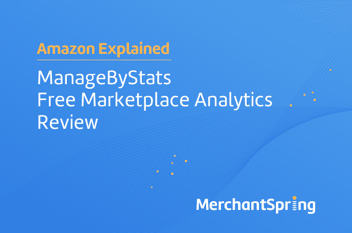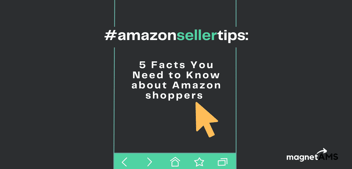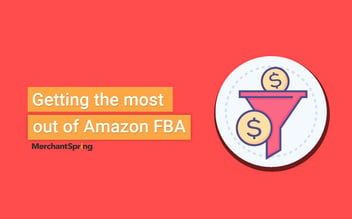Selling Private Label and Wholesale on Amazon: The Most Successful Repricing Strategies and Who Should Use Them
No one can deny this nowadays: Automated product price adjustment has become common practice among Amazon merchants. In fact, it has become increasingly difficult to sell popular Wholesale products successfully on various marketplaces without a repricing tool. But it’s not only Wholesale sellers that have embraced the benefits of repricers. The performance of Private Label sellers has also improved through the use of software solutions.
This raises the question whether Private Label and Wholesale sellers should use repricers in a similar way. This is certainly not the case! The reason for this is mainly due to the way that Amazon places the products on the online marketplaces. Instead of creating a separate product page for each offer, Amazon combines offers from different retailers of the same product on a single product page. This means that if a customer buys a product, only the seller who holds the Buy Box – due to having the best offer – wins this particular contract.
Which seller wins the Buy Box is always calculated by an algorithm that Amazon runs in the background. Decisive factors that this algorithm takes into account are, for example, shipping time and price. The latter in particular is very easy to influence, which is why price optimization has become an established practice through which sellers try to win the Buy Box and generate as many sales as possible.
A Small but Significant Difference
This is especially true for Wholesale products that are being offered by multiple sellers. In most cases, these are high-end items, such as Bose Bluetooth speakers. If you sell over Private Label, however, the situation is somewhat different. Private Label products are usually offered by only one merchant, who is usually also the brand owner. In most cases, this merchant holds the only offer on the product listing, and automatically wins the Buy Box provided that they don't resell any products to other merchants.
So, this would naturally mean: no competition = no need for a repricer. Right? Not quite.
The competition for Private Label sellers no longer takes place on the listing, but between different listings of similar products. Let’s use two fictional dog leash brands to illustrate this example: one is named DoggoWalk, the other is named DogeLeash. Both products receive a separate listing, but compete with each other for better ranking in the Amazon search results. In addition to search engine optimization, the final price is once again an important factor for whether a product listing appears in the top search results or quietly disappears in the depths of Amazon’s search results, never to be heard of again.
So, how can a repricer meaningfully enhance both Wholesale and Private Label products when it comes to price optimization?
- Static repricers: We at SellerLogic generally advise against the use of a static repricer, whether you sell Wholesale and/or Private Label. The problem with such repricers is that they optimize exclusively for the lowest price and act pursuant to rigid rules, such as "always set the product price five cents lower than the cheapest competitor". This leads to price wars, ruins one's own and every other seller's margin and ultimately benefits no one.
- Dynamic repricers without strategies: Dynamic repricers are more sophisticated in that regard. They do not just implement a rule, but analyze the market situation and react accordingly. Not only do they lower the product price to win the Buy Box, but they also gradually increase the price afterwards. For Private Label sellers, however, the benefit remains limited because this form of repricing software often only optimizes for the Buy Box.
- Dynamic repricers with different strategies: An excellent repricer enables the seller to tailor the repricer's mode of operation to the business model at hand, for example by means of optimization strategies. The SellerLogic Repricer, for instance, does not only focus on the Buy Box, but is also able to apply sales- and time-based strategies. The last two points in particular are extremely useful for Private Label sellers.
Buy Box Optimization vs. Sales- and Time-Based Strategy
Let’s dive deeper into the three strategies the SellerLogic Repricer is equipped with. These strategies can be applied to single products as well as product groups, and are available to every customer at no extra charge.
#1: Buy Box Optimization
Let's face the reality: 90 percent of all sales take place via the “Add to Cart” field aka the Buy Box. Whoever owns the Buy Box therefore taps into the majority of sales. This is why the Buy Box strategy is the centrepiece for all Wholesale sellers. What is special about the SellerLogic Repricer, however, is that it does not rely exclusively on the lowest price to win the Buy Box. Once this goal has been achieved, our solution does not stop optimizing, but gradually increases the price again so that the Buy Box is held at the highest possible rate. As a result, merchants not only sell more, but also at higher prices and margins.
| By the way: The procedure with which the SellerLogic Repricer works is also able to increase the internal price-range set by Amazon. This price-range is determined by the prices set for each product by the individual sellers. The internal price-range regulates, for example, how high or low the offer for a specific product may be priced in order to qualify for the Buy Box at all. This means that using the SellerLogic Repricer can help to fundamentally raise the price of a product on Amazon itself. |
#2: Sales-Based Strategies
By using our Push Strategy, sellers can adjust their prices based on the number of units sold. Private Label sellers in particular must be able to control their sales prices over a longer period of time in order to influence the demand for a product.
As an example, consider the following: If the sales figures for DogeLeash go up, the price can be raised gradually on the basis of the aforementioned increase, let's say by five percent per 30 units sold. Multiple rules can also be combined, for example, that the price for all DogeLeash units increases by X percent in accordance to how many units have been sold overall. The opposite scenario can also be accomodated: after X units have been sold, the price automatically drops by Y percent.
#3: Time-Based Strategies
Similar to strategies that are based on the amount of units sold, it can be helpful to adjust your pricing according to certain hours or weekdays. This is possible with SellerLogic’s Daily Push Strategy: In this case, our Repricer begins the price optimization at midnight with a set price. During daytime hours, where business is slow (in the morning, for example), sellers can encourage potential buyers to make a purchase by setting low prices. In the evening, however, when business picks up, our Repricer automatically raises the prices again in order to generate more revenue.
Sales-based and time-based strategies can also be combined. This enables sellers to raise the price by X percent after Y amount of units have been sold, to decrease the price again after further Z amount of units have been sold and so on. By doing so, sellers will generate a higher margin during the course of the day without risking a possible loss of their listing’s visibility in the Amazon search results.
#4 The Manual Strategy
Every Amazon business is unique and a good repricing solution should be flexible enough to cater to this individuality. Private Label and Wholesale sellers benefit equally from this form of optimization. With the SellerLogic Repricer, sellers are free to target either the cheapest competitors, those defined in the "whitelist" or all other competitors that are not eliminated by the "blacklist".
Many different factors can be included for this purpose:
- Desired price gap
- Whitelist of competitors
- Blacklist of competitors
- Valuation number of competitors
- Minimum seller ratings
- Maximum delivery time
- Application to listings with FBA, FBM or all fulfilment methods
- Application to domestic, international or both/and offers
| P.S.: Even we are aware that, in certain cases, a rigid optimization according to a certain rule can be useful to drive revenue. This is naturally also an option with our Repricer. |
Final Thoughts: Repricing with Wholesale and Private Label
Repricing is not a question of what type of product you sell, but works for both Wholesale and Private Label. However, there are significant differences to consider. For example, it is of little use to optimize for the Buy Box if you sell your own Private Label product.
Wholesale sellers, on the other hand, are well advised to apply Buy Box optimization strategies, either fully automated or customized. Time and sales-based strategies are more suitable for products that are only sold by one seller.
In any case, in order to prevent price wars, every seller should be certain to use a dynamic repricer that also increases product prices again instead of always decreasing them just for the sake of winning the Buy Box.
---
About SellerLogic
SellerLogic’s Portfolio encompasses two dynamic tools that can be connected to your Amazon account with just a few clicks – the SellerLogic Repricer and Lost & Found. While the latter monitors your FBA processes and informs you about reimbursement claims you have against Amazon, the SellerLogic Repricer is specialized in optimizing your pricing strategy, making it infinitely scalable while remaining flexible. Both solutions enable an efficient and tidy profit maximization in the field of E-commerce – while saving the merchant time and money.
Interested in getting to know us? Get in touch!
Guest Author

Robin Bals | SellerLogic










Add a Comment